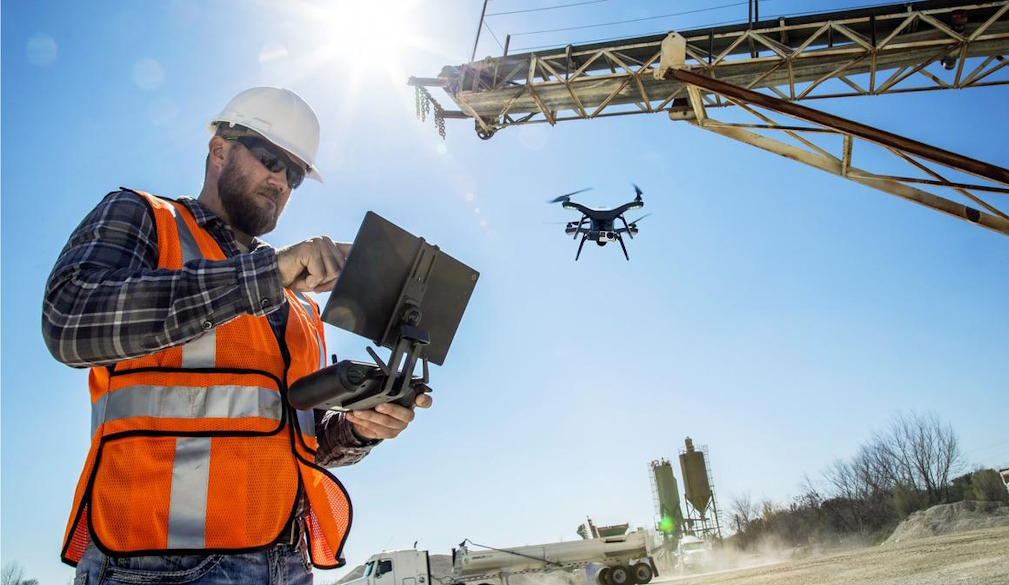Drone industry revs up for game-changing regulatory shift

In a world-first move that’s set to revolutionise drone use in Australia the Civil Aviation Safety Authority (CASA) will introduce a more accessible exam for pilots operating beyond visual line of sight (BVLOS) and outside controlled airspace (OCTA).
The change will open up opportunities for drones to boost productivity across the Australian economy by billions of dollars, while also improving occupational health and safety in a range of industries.
Sectors that will benefit the most are resources, agriculture, construction and emergency services.
The BVLOS certification reform will also provide strong tailwinds for Australian companies at the vanguard of the drone industry which are poised to take off as regulations catch up with technology.
Notable among those Australian innovators are global leader in BVLOS connectivity Elsight (ASX:ELS) and drone manufacturing frontrunner Carbonix.
Elsight’s Halo platform for BVLOS has won the company a range of contracts with leading drone delivery companies across the globe including DroneUp, which in turn supports US retail giant Walmart’s home delivery service.
Carbonix has just received its internationally recognised Basic Aviation Risk (BAR) Standards required for companies operating in the resources sector, as well as humanitarian, government and insurance organisations.
Another company expecting a big lift in business is Global Drones Solutions which provides CASA and Australian Skills Quality Authority (ASQA) approved drone pilot training to some of Australia’s largest companies including Woodside, Rio Tinto, BHP and FMG, plus multinationals Chevron and Shell.
“This will be massive for BVLOS operations in Australia because they have been restricted while authorities have worked to ensure the safety of the technology – after all, that’s their job,” Global Drones Solution CEO Mahmood Hussein said.
“But now, thanks to the connectivity confidence provided by companies like Elsight, CASA has opened the gates for BVLOS and the huge gains it can offer the Australian economy and communities.”
Mr Hussein said the change was the first of its kind across the globe and would transform the operations of resources and infrastructure companies, as well as utilities organisations, by providing significant improvements in their efficiency and effectiveness.
He witnesses the enormous advantages drones can deliver through his Perth-based company's collaborations with its resources clients, construction giants such as BGC and Multiplex, and other respected organisations like Pilbara Ports Authority, Fremantle Ports, and WA's Water Corporation.
“Mining companies use drones to survey stockpiles instead of this being done by a person on the ground inspecting vast piles of loose material,” Mr Hussein said. “Drones are also used to do condition reports on mining equipment and check for any issues, which is vital for their workers’ safety.
“Occupational health and safety is one of the most compelling cases for utilising drones at mine sites and gas platforms.
“They can be employed by OHS teams to assess incidents in remote locations, such as the bottom of a pit, which could be a 35-minute drive from the surface. Drones, on the other hand, can be flown to the location in a fraction of that time, providing aerial intelligence and enabling the team to offer a much better informed response and assistance.
“The changes to the BVLOS exam will open the floodgates for the expansion of all these uses.”
Evolutionary rule
The current IREX exam, which is complex in nature, was originally designed for pilots of planes and helicopters.
The catalyst for the change has been drone technology increasingly enabling operations outside standard conditions - and many organisations want to realise the enormous benefits of BVLOS flights.
In a sign of how drone regulations are recognising the rapidly developing technology, the new BVLOS OCTA exam will provide a more targeted evaluation of remote pilots’ skills and knowledge.
Mr Hussein, who has already prepared training for the new certification, said while the new exam would be less complex it would still cover essential safety-related topics including general BVLOS and aeronautical knowledge, meteorology, airspace, human factors, navigation systems and communications.
Elsight CEO Yoav Amitai said he welcomed the change and its recognition of the connection confidence provided by platforms such as Elsight’s Halo.
“Elsight supports major customers in applications where seamless communication is vital,” Mr Amitai said. “These include healthcare and critical utility infrastructure survey provider Spright and of course DroneUp in the US, plus the Israeli police. Our clients rely on Halo to give them connectivity confidence that can’t be replicated elsewhere.
“Halo also has other services, such as remote ID, built-in so that drone manufacturers don’t have to go and find them elsewhere.
“It’s really exciting to see that the potential of BVLOS can be better realised across a range of sectors in Australia and we look forward to being a part of that growth.”
2040 vision
The latest Deloitte Access Economics report on drone use forecast the value of the Australian industry would grow from $78 million in 2020 to $14.5 billion in 2040.
It also detailed the cost savings and productivity gains that can be made from the uptake of drone technology.
Through to 2040, the mining industry will save at least $2,395m. The agriculture, forestry and fishing sector will be another big winner with its saving estimated at $2,950m, with construction at $1,875m. The e-commerce and delivery sector is set to benefit $1,875m, government services $620m and urban/regional air mobility $100m.
“It’s such an exciting industry to be involved in – we’re seeing a continual expansion in demand for our training as drones become less expensive and people see what they can offer their organisations. This certification change is now going to give a whole new impetus to Australia’s drone sector,” Mr Hussein said.







